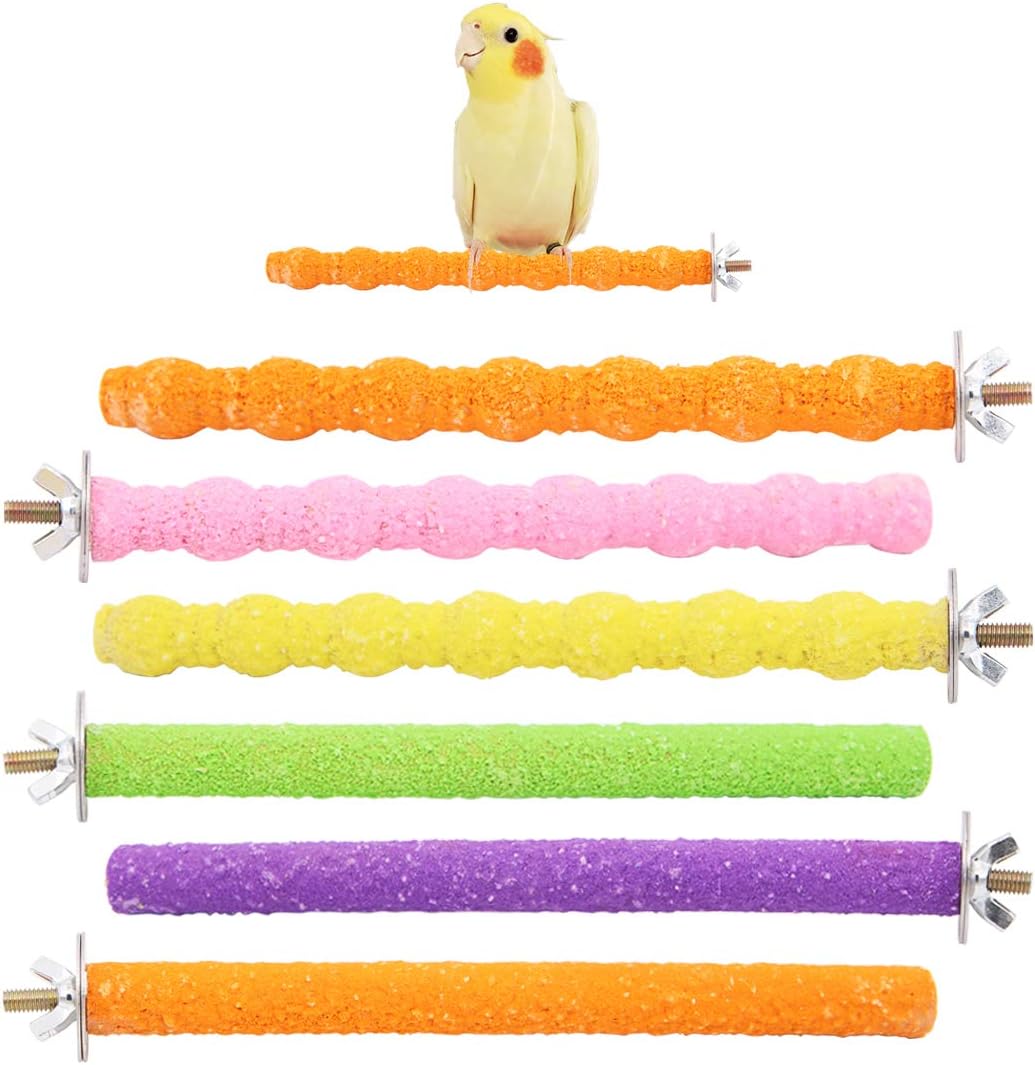
Of course! Introducing new toys and perches to your bird is a great way to provide environmental enrichment, which is crucial for their mental and physical well-being. By keeping their environment interesting and engaging, you can help prevent boredom and encourage natural behaviors. When introducing new toys and perches, it’s important to do so gradually, observe your bird’s response, and rotate items regularly to keep things fresh and stimulating. Remember, a happy and stimulated bird is a healthy bird!
Enriching Birdcages for Happy Birds
Assess Your Bird's Preferences
Observe Your Bird’s Preferences
Observe Behavior: Watch how your bird interacts with different toys and perches. Pay attention to which ones they enjoy the most.
Notice Patterns: Look for patterns in their behavior. Do they prefer toys that make noise or ones they can chew on? Do they spend more time on perches of a certain material or shape?
Rotate Items: Offer a variety of toys and perches to see which ones your bird engages with the most. Rotate them regularly to keep your bird stimulated and entertained.
Test the Waters: Experiment with different textures, colors, and sizes to see what captivates your bird’s interest. Encourage exploration by introducing new items gradually.
By observing your bird’s preferences for toys and perches, you can create an enriching environment that will keep them happy and engaged.
Select a Variety of Toys and Perches
- Choose a Diverse Array: Select toys and perches that vary in textures, shapes, and sizes to offer your bird a stimulating environment. Include wood, rope, and metal perches to cater to your bird’s comfort and exercise needs. Alternate between chewable toys, puzzles, and interactive toys to keep your bird mentally engaged and physically active.
- Rotate and Renew: Regularly rotate the toys and perches within your bird’s enclosure to maintain their interest and prevent boredom. Introduce new toys periodically to provide novel experiences and prevent habituation. Remember to sanitize toys and perches regularly to maintain cleanliness and promote your bird’s well-being. By offering a diverse range of toys and perches, you can ensure that your feathered friend stays happy, healthy, and mentally stimulated.
Introduce One Item at a Time
- Introduce new toys and perches gradually to prevent overwhelming your bird. Start by adding one new item at a time to the bird’s habitat. Allow your bird to explore and get comfortable with the new object. Watch its behavior closely to ensure it feels safe and at ease.
- Give your bird sufficient time to interact with each new item before adding another one. Allow at least a few days for the bird to adjust and become familiar with the new toy or perch. This will help prevent stress or anxiety in your bird and ensure a smooth transition to the new addition. Remember, patience is key when introducing new items to your bird’s environment.
Rotate Toys and Perches Regularly
- Inspect the current toys and perches for damage or wear.
- Introduce new toys and perches to the cage.
- Rotate out old toys with newer options every one to two weeks.
- Provide a variety of toy types for mental stimulation.
Regularly changing your bird’s toys and perches is essential for their mental and physical well-being. By rotating these items, you can keep your bird’s environment dynamic and engaging, preventing boredom and encouraging activity. Remember to vary the textures, colors, and types of toys and perches to provide a stimulating and enriching experience for your feathered friend.
Monitor and Supervise
Monitor and Supervise
Observe your bird closely as it interacts with the new toys and perches. Pay attention to how your bird engages with each item to ensure it is enjoying them and that they are suitable for its size and species. Check for any signs of wear and tear that could potentially harm your bird and replace them as needed.
Inspect the toys and perches regularly to confirm that they are in good condition. Remove any broken or damaged items immediately to prevent accidents. Clean the toys and perches regularly to maintain a clean and healthy environment for your feathered friend. Rotate the toys and perches consistently to provide stimulation and prevent boredom.
Creating a Safe and Exciting Environment
Great conclusion! If you need any more help with your blog posts or information on caring for your bird, feel free to ask. We’re here to help!
Essential Supplies List
Helpful Suggestions for Success
Creating a Fun and Stimulating Environment for Your Feathered Friends
- When setting up the birdcage, place it in a quiet and well-lit area of your home where your bird can feel safe and comfortable
- Ensure the perches are at different heights to provide variety for your bird to move around and exercise
- Place different toys such as bells, swings, and mirrors inside the birdcage to keep your bird mentally stimulated and entertained
- Provide fresh food and water daily, and make sure to clean the birdcage regularly to maintain a healthy environment for your bird
Frequently Asked Questions about Birdcages with Perches and Toys
What material is the birdcage made of?
The birdcage is typically made of metal, wire, or plastic. These materials are commonly used to provide a safe and comfortable environment for our feathered friends.
What is the size of the birdcage?
The size of the birdcage is 18 inches in length, 14 inches in width, and 20 inches in height.
What types of toys are provided in the birdcage?
In a birdcage, it is common to provide toys and materials that can help keep the bird engaged, entertained, and mentally stimulated. Various types of toys can be included, such as swings, bells, ropes, mirrors, puzzle toys, chewable toys, and foraging toys. These toys help prevent boredom, encourage physical activity, and promote natural behaviors for the bird.
Are the perches adjustable in height?
Yes, the perches are adjustable in height. They can be customized to accommodate different preferences and needs.
Are the toys made of safe materials for birds?
Yes, the toys are made of safe materials for birds. We ensure that all the toys are non-toxic and bird-friendly to keep your feathered friends happy and healthy while they play.
What is the weight of the birdcage?
The weight of a birdcage may vary depending on its size, material, and design. If you know the specific birdcage you are asking about, we can help you find the weight. However, we would recommend checking the product specifications or contacting the manufacturer for an accurate answer.
What is the recommended bird size for this cage?
The recommended bird size for this cage is medium to large birds, such as cockatiels, conures, or small parrots. It is essential to ensure that the birds have enough room to move around comfortably and spread their wings. It is crucial to prioritize the well-being and safety of the birds, so selecting the appropriate cage size for the bird’s size and species is essential. If you have any concerns or need further assistance in choosing the right cage size for your bird, please let us know, and we will be happy to help.
Are there doors for easy access to your bird?
Yes, there are doors for easy access to the bird inside the cage for feeding, cleaning, and interacting with them. These doors provide convenience and ensure the well-being of our feathered friends.
Is the birdcage suitable for both indoor and outdoor use?
Yes, birdcages are typically suitable for indoor use to keep pet birds safe and secure. However, they may not be ideal for outdoor use as they may be exposed to weather elements, predators, and other risks. To ensure the safety and well-being of the birds, it is recommended to use birdcages primarily indoors.
How many perches are included in the birdcage?
The birdcage includes two perches for the bird to rest on.
Is the birdcage easy to assemble?
Yes, the birdcage is easy to assemble. The instructions are clear and all the necessary parts are included for straightforward setup. If you encounter any difficulties, we are here to help guide you through the process.
Does the birdcage come with feeding dishes?
Yes, the birdcage comes with feeding dishes.
Can the toys be easily removed for cleaning?
Yes, the toys can be easily removed for cleaning.
Does the cage come with a removable bottom tray for cleaning?
Yes, the cage comes with a removable bottom tray for easy cleaning.
Are there any specific safety features in the birdcage design?
Yes, there are specific safety features in a birdcage design to ensure the well-being of the birds. Some common safety features include a secure door latch to prevent escapes, non-toxic materials to avoid harming the birds, and removing any sharp edges that could cause injuries. Additionally, some birdcages have removable trays for easy cleaning and to prevent the birds from coming into contact with droppings. These safety measures are essential to create a secure and healthy environment for our feathered friends.


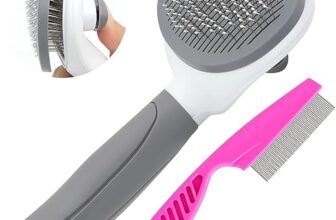
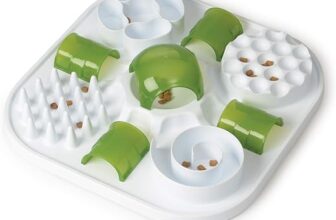
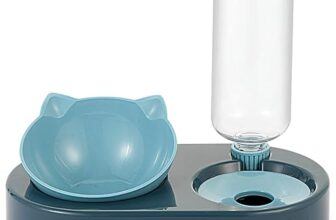
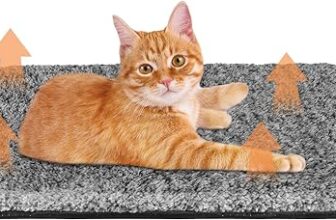

I introduced a new rope perch to my cockatiel last week, and he absolutely loves it! It’s great to see him exploring and enjoying the new addition to his cage.
That’s fantastic to hear! Cockatiels often enjoy rope perches due to their texture. Keep up the good work in enriching your bird’s environment.
Can you recommend specific types of perches or toys that are best suited for larger parrots like macaws or cockatoos?
Should I be concerned if my bird seems hesitant to interact with a new toy or perch? How can I encourage them to try it out?
If your bird is hesitant, try placing the new item near their favorite perch or treat. Sometimes they need time to get used to it. Be patient and encourage them with positive reinforcement.
I own a budgie, and after following these steps, I noticed a positive change in his behavior and activity levels. Thank you for the helpful guide!
It’s great to hear that your budgie is benefiting from the new toys and perches! Providing enrichment is essential for budgies’ physical and mental well-being. Keep up the good work!
Thank you for sharing your experience! Understanding your bird’s preferences is crucial for providing them with the right toys and perches.
I applied the rotating toys tip, and I noticed my bird’s interest in them stays high! It really keeps things exciting for my feathered friend.
That’s wonderful to hear! Rotating toys and perches helps prevent boredom and encourages exploration. Keep up the good work in keeping your bird engaged.
I found that observing my bird for a few days really helped me understand its preferences better. It’s amazing how different birds can be in terms of what they like!
I’ve been thinking of adding a bird play gym to my bird’s cage. Do you have any tips on how to choose the right one or how to introduce it effectively?
When selecting a bird play gym, consider the size, materials, and complexity based on your bird’s size and preferences. Introduce it gradually by placing familiar toys on it to encourage exploration.